The Transcontinental Dinner
Today we take new technologies like high-tech videoconferencing, instant messaging, Twitter and video chats for granted. But that wasn’t always the case. Ninety-three years ago (on May 29th, 1916, to be exact), Johnson & Johnson took part in a demonstration of the latest cutting-edge technology: the opening of the first transcontinental telephone line opened between New Brunswick, New Jersey and San Francisco, California. The demonstration was such a big deal that it was held at a special Transcontinental Dinner at one of the leading hotels in New Brunswick, New Jersey.
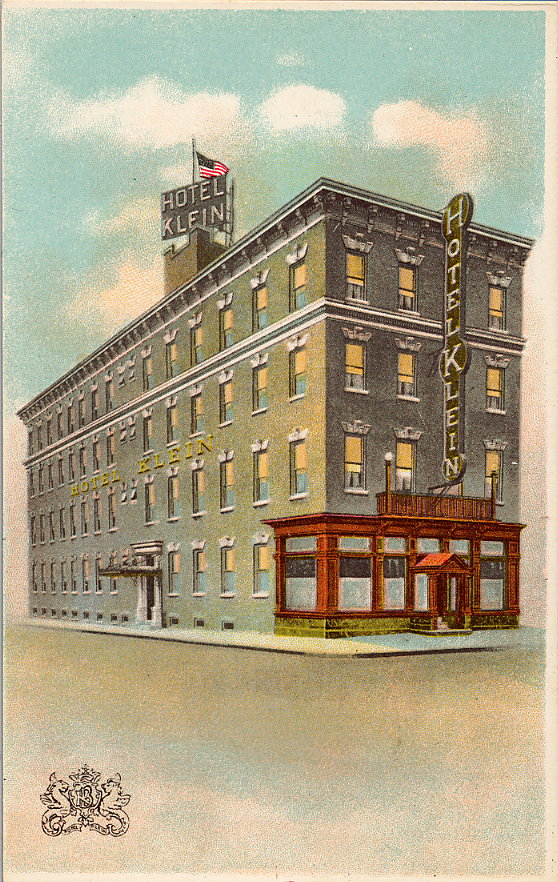
The Hotel Klein, Courtesy of Ken Lew's online postcard collection
The demonstration of the new American Telephone and Telegraph Co. transcontinental line was organized by the New Brunswick Board of Trade, with the cooperation of Johnson & Johnson. Since it was one of New Brunswick’s leading industries, and it had sales offices in San Francisco, Johnson & Johnson was chosen to participate in the event, while leading citizens “listened in” to the conversations, as Scientific Director Fred Kilmer put it, using a term so new that it was in quotation marks. [THE RED CROSS MESSENGER, Vol. IX, No. 1, September, 1916, p. 25]
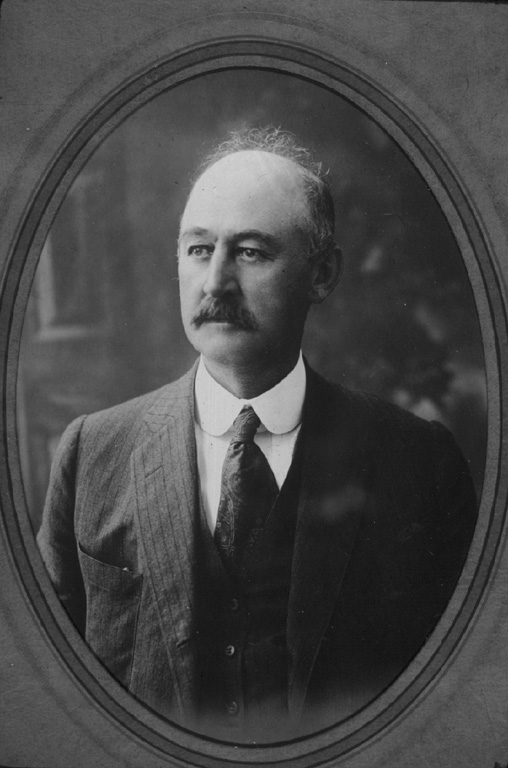
James Wood Johnson was on the New Brunswick side of the call.
Among those representing the Company were President James Wood Johnson, and -- in his first public appearance representing Johnson & Johnson -- Robert Wood Johnson, who was 23 years old and had become a department head the previous year.
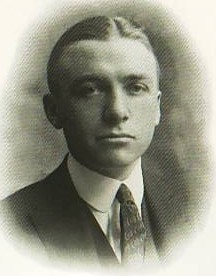
Robert Wood Johnson was also on the call.
There were 200 attendees, including New Brunswick mayor (and Robert’s close friend) Edward F. Farrington, and Rutgers president William Demarest – who had attended the Rutgers Grammar School (Now Rutgers Prep) as a child, graduated from Rutgers College as a student, and was now its president.
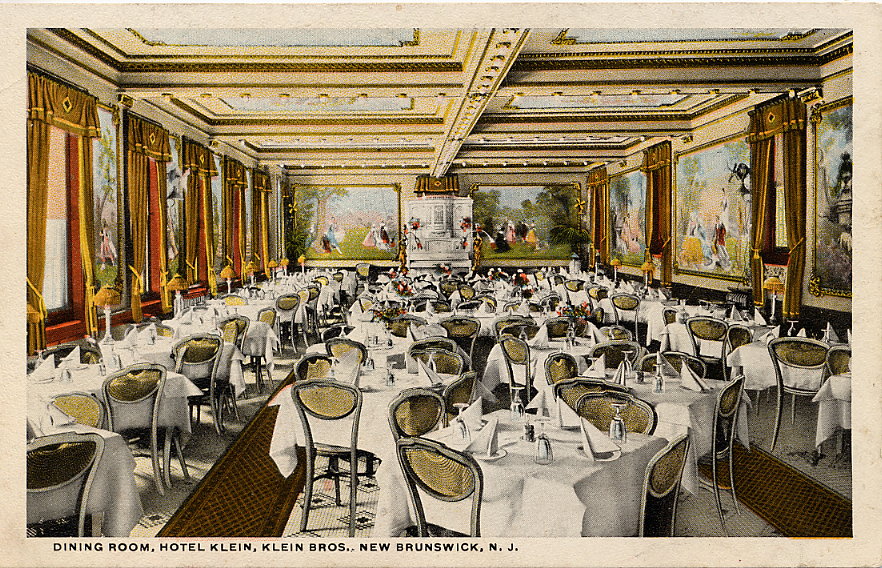
The dining room in the Hotel Klein, courtesy of Ken Lew's online postcard collection
The tables at the Hotel Klein were outfitted with individual telephone receivers for each of the guests. Attendees listened to local dignitaries and sat through a talk on “preparedness” by a leading speaker of the day. Shortly after 9:00 p.m. New Brunswick time, when the speeches were concluded, the attendees picked up their receivers and put them to their ears. There was a roll call of wire chiefs from Pittsburgh to Chicago to Omaha to Denver to Salt Lake City and on until the connection finally reached San Francisco at 6:14 pm.

A Candlestick Telephone – the kind of phone that would have been used at the dinner
The new transcontinental connection was crystal clear. Fred Kilmer was amazed that the participants didn’t have to shout into the telephones to be heard all the way across the country:
“Those who talked over the telephone did not raise their voices above the usual conversational pitch, and the replies came back from across the continent clear and instantaneous. There was no more effort, delay or indistinctness than in talking across a table.” [THE RED CROSS MESSENGER, Vol. IX, No. 1, September, 1916, p. 25]
For the next hour, greetings were exchanged between the two cities. Robert Wood Johnson had been chosen as one of the greeters, and he spoke with the Company’s San Francisco sales agent H. D. Dietrich, of Waldron & Dietrich fame. Unlike the New Brunswick gathering, which was made up only of men, Mrs. Waldron and Mrs. Dietrich attended on the San Francisco side.
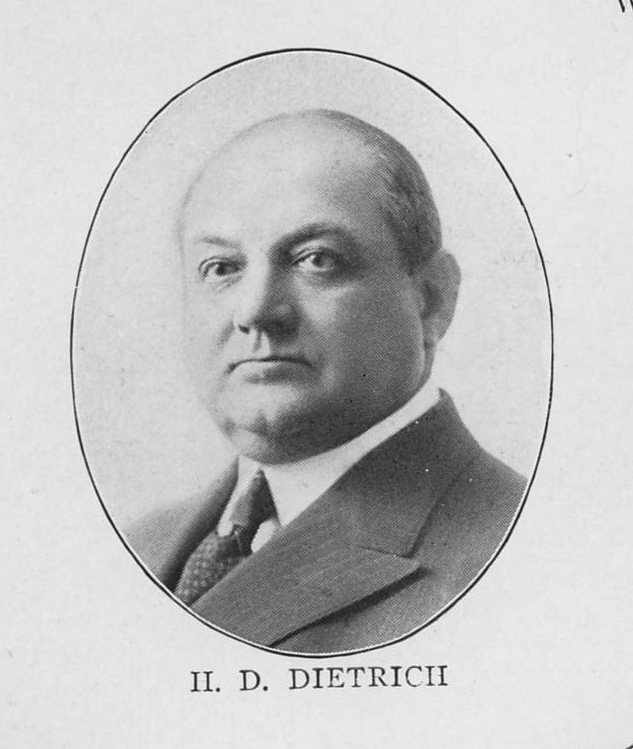
H. D. Dietrich, of Waldron & Dietrich, was on the San Francisco side of the call
The attendees in New Brunswick marveled at the new technological achievement. Here’s what Fred Kilmer said:
“When Mr. James W. Johnson, president of Johnson & Johnson, at the New Brunswick end of the line, talked with Mr. H. D. Dietrich, at the San Francisco end, the most blasé of business men at the tables felt something akin to uncanniness at the thought that his voice had gone across thirteen states, shot over prairies and through forests, hurtled through cities, climbed the Rockies, skimmed across the desert and reached the Pacific coast, and the answer had come back in an eye-wink." [THE RED CROSS MESSENGER, Vol. IX, No. 1, September, 1916, p. 25]
After the greetings were over, the attendees in San Francisco sent the sound of the Pacific Ocean eastward, from a transmitter placed on Seal Rocks. New Brunswick, having no natural water resource that was loud enough to be heard easily over a transcontinental phone line, did the next best thing and responded by singing “On the Banks of the Old Raritan.” (Rutgers alumni, of course, STILL know that song by heart…but did you know it originally had five verses, not two?)
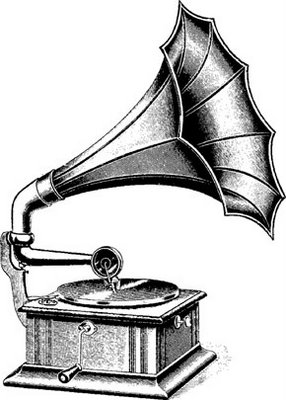
A Victrola
San Francisco followed that by transmitting the sound of a Victrola playing “Little Grey Home in the West” and, after taking that in, the dinner guests in New Brunswick finished the evening by enthusiastically singing the following:
“Good Night, Frisco!
Farewell, Frisco!
So long, Frisco!
We’re going to leave you now.
We’ll annex you by and by,
Do not sigh! Don’t you cry!
We’ll annex you by and by,
Although we leave you now.”
With that, the Transcontinental banquet attendees on both coasts, New Brunswick and San Francisco, signed off and hung up their telephones. Interestingly enough, transcontinental dinners seemed to be a bit of a mini-trend in 1916, with MIT and the National Geographic Society hosting them as well. The MIT dinner guests included Thomas Edison, Alexander Graham Bell (inventor of the telephone) and airplane inventor Orville Wright. (The MIT gathering was not necessarily the most academic or high-minded of the transcontinental dinners: they sang a song about drinking beer as their sign-off.) Here’s a partial transcript of the National Geographic Society’s 1916 Transcontinental Dinner, in case anyone is curious as to exactly how these things went.
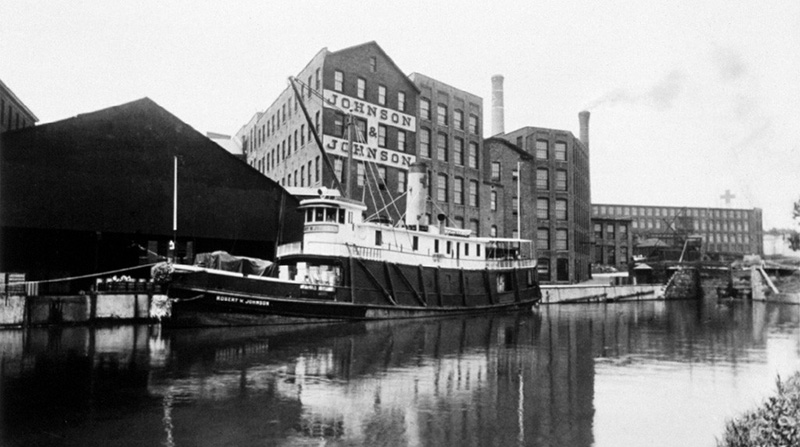
Johnson & Johnson Circa 1916 -- Now Just a Transcontinental Telephone Call Away
So, why was this such a big deal for Johnson & Johnson? Because the New Brunswick, New Jersey office was now within voice distance of the Company’s San Francisco office – the U.S. office that was the furthest away. This meant that all of the branch offices of Johnson & Johnson were now in voice contact with the home office. That gave Johnson & Johnson the ability respond more quickly to customer requests and questions, it put the sales offices and sales agents in closer and more immediate touch with New Brunswick, and made it possible for the Company to get its products where they were most needed far more rapidly. Before the transcontinental line was completed, communication was either by letter (which was slow) or by telegraph – which had to be brief and not very detailed. Just ten years earlier, after the devastating 1906 San Francisco earthquake and fire, Waldron & Deitrich, the Company’s west coast sales agents, had received special permission to telegraph an urgent appeal for medical supplies from San Francisco to Johnson & Johnson in New Brunswick; just a short ten years later, through the marvels of modern technology, Waldron & Dietrich and New Brunswick were now in speaking distance.

Excellent history lesson.
Ditto last comment, really interesting story and pictures, they had style in the old days, no jeans and trainers